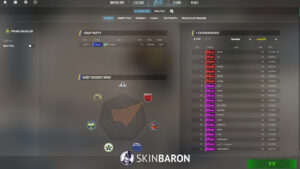The Hookup Dossier: Your Ultimate Guide to Modern Dating
Explore the ins and outs of dating, relationships, and modern romance.
Veto or Not to Veto: The CS2 Map Veto Dilemma Explained
Discover the ultimate guide to the CS2 map veto dilemma! Unlock strategies, secrets, and tips to enhance your gameplay and dominate the competition!
Understanding the CS2 Map Veto Process: Key Factors to Consider
Understanding the CS2 Map Veto Process is essential for both players and fans alike, as it can significantly influence the outcome of a match. The map veto system serves as a tactical layer where teams must decide which maps they excel in and which ones to avoid based on their strengths and weaknesses. Factors to consider include the current meta, player preferences, and historical performance on specific maps. Each team typically follows a structured approach to the veto process, starting with one team banning a map, followed by the opposing team, which can lead to a back-and-forth that ultimately shapes the battlefield for the match.
Moreover, it is important to analyze how individual players perform on different maps during the CS2 Map Veto Process. For instance, a team may choose to ban a map where their opponent has exhibited a strong track record, thus trying to eliminate an advantage. Additionally, teams often consider recent match history and their opponents' playstyles when making their selections. The interplay of strategy and psychology makes the map veto a fascinating aspect of competitive play, as teams must remain adaptable while sticking to their game plans.

Counter Strike is a highly popular first-person shooter game where players engage in team-based combat. Many players look for ways to enhance their gameplay, including optimizing their fallen settings for better performance and accuracy. The game has a vibrant esports scene, attracting millions of fans worldwide.
The Impact of Map Vetoes on Competitive Play: Strategy or Luck?
The practice of map vetoes in competitive gaming has become a pivotal point of discussion among players and analysts alike. Vetoes allow teams to eliminate specific maps from the competitive rotation, leading to strategies that can heavily influence the outcome of matches. Some argue that this practice is more about strategic planning, giving teams the ability to **favor their strengths or exploit opponents' weaknesses**. However, there are instances where the randomness of map selection and unexpected vetoes introduce an element of luck, affecting teams regardless of their preparation or skill level.
Critics of map vetoes suggest that they can undermine the **integrity of competitive play**, adding a layer of unpredictability that can overshadow a team's ability to adapt in real-time. Furthermore, the impact of these vetoes can create an imbalanced playing field, where certain maps may inherently favor specific playstyles or strategies. As the debate over whether map vetoes are a tool for strategy or merely a chokehold of luck continues, one thing remains clear: these decisions carry significant weight in the overall dynamic and outcome of a competitive match.
5 Common Questions About CS2 Map Vetoes Answered
Counter-Strike 2 (CS2) has introduced a new level of strategy with its map veto process, which allows teams to eliminate maps before each match. Many players have questions about how this system works. One common question is: What is a map veto? In simple terms, it's a procedure where both teams take turns removing maps from the pool before a match starts. This ensures that the teams play on a map they are most comfortable with, enhancing the competitiveness of the game.
Another frequently asked question is: How many maps can be vetoed? Typically, teams will each veto two maps, resulting in a final map selection that contributes to the overall strategy of the match. Furthermore, players often wonder Does the map veto affect the outcome of a match? While it certainly does not guarantee victory, a well-thought-out veto strategy can provide a crucial advantage by favoring a team's strengths and minimizing the opponent’s capabilities. Understanding the nuances of the map veto process is essential for any serious CS2 competitor.